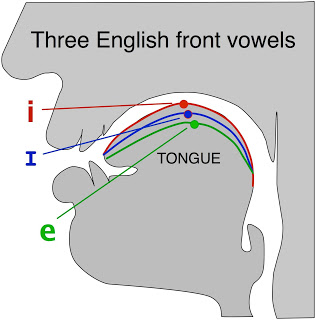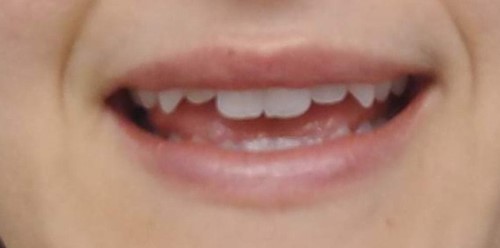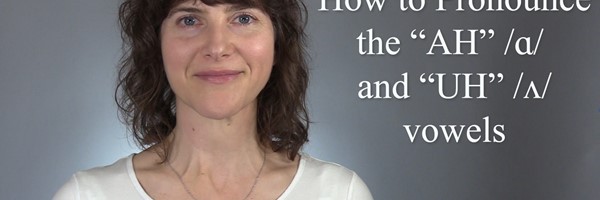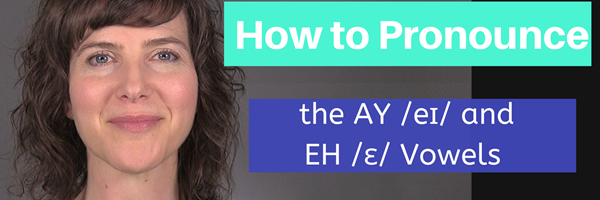This is Part Four of the Top 5 Problematic Sounds in American English. As I mentioned in the previous blog, your native language may differ from another person reading this blog, so these sounds may or may not be challenging for you. But based on my experience with accent modification, most people have difficulties with these same 5 sounds, regardless of their native language. So let’s continue with the next sounds: The “eee” and “ih” vowels.
Most languages have the “eee” vowel, represented by /i/ in the International Phonetic Alphabet (IPA). This is the “eee” sound in the word “he”, and it should be fairly easy for most of you to produce.
In English, the /i/ vowel is considered a tense vowel, meaning there is more tension within the face/lips/tongue when you say this sound. Try this out: Put your hands under your chin when you say “eeee”. You should feel some tension in the muscles just below your jaw (this is the base of the tongue), and your lips should spread out into a smile - so you should feel tension in the lips and cheeks, too.
Contrast that with the /ɪ/, which is considered a lax vowel. Do the same experiment: Put your hands under your chin when you say the words “hit”, “mit”, and “lit”, and hold out the vowel “ih”. You should feel less muscle movement - less tension - when you say the “ih” vowel compared to the “eeee” vowel.
If this is a bit difficult - don’t worry! This particular vowel combination (/i/ vs /ɪ/) is problematic for many non-native English speakers. Vowels are abstract - they depend on the movement of the tongue and jaw, and they are made by changing the space within the mouth and throat - and this makes them difficult to master. Consonants, like /b/, /m/, and the “th” sound, are much easier to learn - they are visual and have concrete movements of the lips/tongue/jaw, and therefore are usually much easier to copy.
While we’re on the topic of tongue and jaw movement seen with vowels, here’s a picture that might help explain what I mean.
This is a drawing of the tongue position within the mouth when you say the vowels /i/, /ɪ/, and /e/. You’ll notice that the tongue is positioned highest in the mouth with /i/ and then progressively lowers in the mouth with each vowel. The jaw also opens up a bit as you progress down the vowels (though this drawing doesn’t really show that). You may not know that this is what your tongue is doing - and native American English speakers never consider tongue position when saying vowels - but it might help you to understand how vowels are produced and how they are different from one another.
One huge caveat I should mention here (and I’m sure you are all aware of this already): Don’t rely on the spelling of the word to inform you about how to pronounce the word. (Isn’t this the hallmark of English?) For example, think of the words “good”, “should”, and “woman”. The vowel /ʊ/ is in all three of these words, but the spelling does not match: “oo”, “ou”, and “o” all produce the same sound. This is why vowels can be so frustrating for non-native English speakers, but hang in there! The more you practice and expose yourself to these words, the more it’ll make sense to you. So when you practice vowels, focus on the sound, not the spelling.

Let’s delve into the vowel /i/. Like I mentioned earlier, this is a tense vowel, and you should feel more tension in the face and neck muscles when you say this sound (do the “hand under the chin” experiment). Your lips should be spread out wide, almost in a smile, and the tongue is high in the mouth and flat, with the sides of the tongue touching the inside of the upper molars. Your jaw should be almost closed (but not quite!). Use a mirror to make sure your mouth matches this picture:

Let’s contrast that with its lax counterpart: /ɪ/. Again, feel the muscles under your chin when you say this sound - there should be less muscular effort, less tension. Your lips are also in a more neutral position, and your jaw is slightly more open than for /i/. Your mouth should look like this (and use your mirror to make sure you’re matching with the picture):

One other important feature that you can use to differentiate vowels is the vowel length. In general, the tense vowel /i/ is pronounced for a bit longer than the lax /ɪ/ vowel. Let’s use the example of the word pair bead and bid, transcribed as /bid/ and /bɪd/ in the IPA. When you pronounce the word bead, you should hold out the /i/ vowel for a little longer than you do with the /ɪ/ in bid. Listen to my voice recording below and see if you notice the difference in vowel length:
Here is more practice with the /i/ and /ɪ/ vowels:
Thanks for watching! And I'd love to hear from you - contact me to learn how we can work together to perfect your American English pronunciation!



